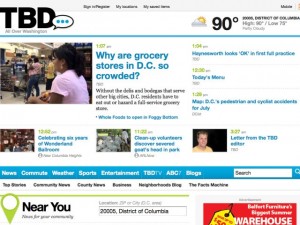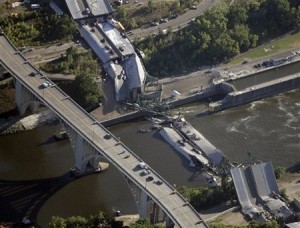Steve Buttry has spent nearly 40 years in the newspaper business and, having successfully crossed over to digital journalism, is now the the Director for Community Engagement at TBD, a site that focuses on DC, Maryland and Northern Virginia news. Throughout his lecture today, he engaged the class with several sites that took a news story to another level of online journalism. There were interactive maps, additional video/photo footage, and links that let the reader navigate the story for themselves.
Helpful tips from Buttry:
- When you get a story, imagine the best way you could report. Change the reporting process and think of the possible ways the reader can get engaged with the story. As a writer of traditional journalism, we have control of what the viewer reads and in what order. With digital journalism, the reader navigates the story for themselves.
- Cut and paste your lead from a story and tweet it out for everyone to see, gauge the reaction and if your lead won’t fit into a tweet, then it’s too long.
- Best rule of journalism: never say no for somebody else. Always interview, gather information because there are some people, even though they have tragic stories, that want to share what’s happened with them to the world.
*A great example of letting your a reader navigate themselves through a story was is The New York Times’ online story about the Japanese nuclear crisis. They have interactive photos that combines before and after shots of certain landscapes in Japan, and the reader can click on an arrow that reveals the after-tsunami photos right over the before shot. You can automatically spot the devastation with this tool, which makes the story that much more shocking.
*Another example of interactive journalism is The Des-Moines Register’s story on the Parkersburg, Iowa tornado that hit May 25 back in 2008. The site has an interactive map of the town that shows all the buildings that were effected. Not only do they map out the damaged buildings and areas, but when you click on them, additional videos,information and pictures pop up about the building. The reader can literally jump from place to place whenever they want, and not have to read through a bunch of paragraphs to get the information they seek.
*This last article, by The Star Tribune about the aftermath of the 35W bridge collapse in central Minneapolis, is perhaps the best interactive story in my opinion that Buttry showed us. The audio especially in the opening video, a mashup of 911 calls and emergency dispatch calls, was the best and most moving part of the story. On the left, you get a scrolling image of the entire bridge, in all its collapsed and crumpled state, that is littered with cars. Each car has a tag that you can click on and on the right hand side, you get information and the story about the individuals in that car. This is the most clever way I can think of to give this story the catastrophic chaos it deserves. It lets the reader decide who he/she wants to feel for and wants to read more about.
This visit from Steve Buttry showed me that journalism is evolving as fast as you can click the button on your mouse. With each new interactive story, reporters find ways to suck the audience into the news. These gave me great ideas for our final project, and I think our group is definitely doing something with an interactive map, where you click on the icon and it gives you the story behind a person or an event.
You can find more of Buttry’s insights on his blog.


